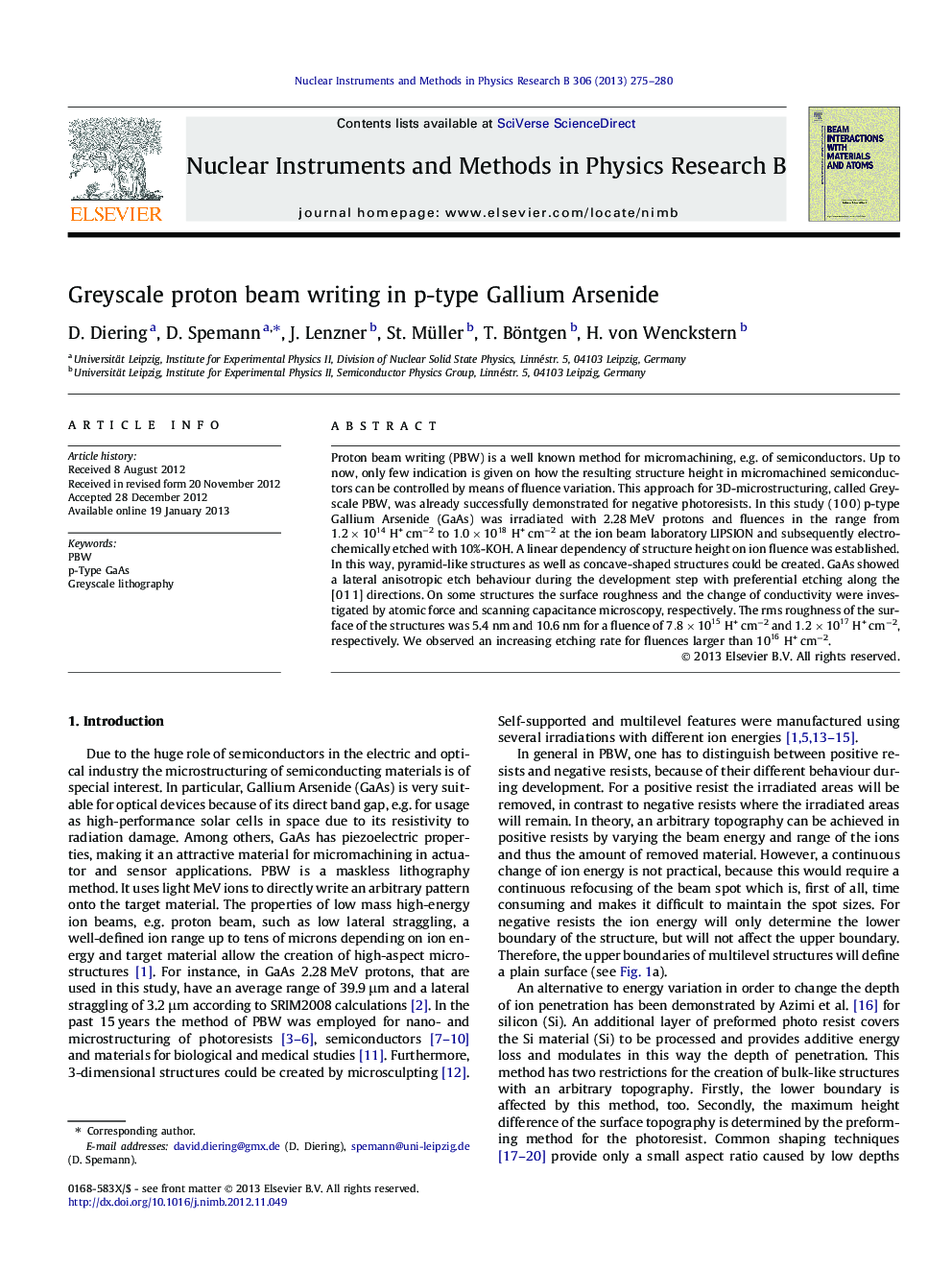| Article ID | Journal | Published Year | Pages | File Type |
|---|---|---|---|---|
| 8042749 | Nuclear Instruments and Methods in Physics Research Section B: Beam Interactions with Materials and Atoms | 2013 | 6 Pages |
Abstract
Proton beam writing (PBW) is a well known method for micromachining, e.g. of semiconductors. Up to now, only few indication is given on how the resulting structure height in micromachined semiconductors can be controlled by means of fluence variation. This approach for 3D-microstructuring, called Greyscale PBW, was already successfully demonstrated for negative photoresists. In this study (1Â 0Â 0) p-type Gallium Arsenide (GaAs) was irradiated with 2.28Â MeV protons and fluences in the range from 1.2Ã1014 H+Â cmâ2 to 1.0Ã1018 H+Â cmâ2 at the ion beam laboratory LIPSION and subsequently electrochemically etched with 10%-KOH. A linear dependency of structure height on ion fluence was established. In this way, pyramid-like structures as well as concave-shaped structures could be created. GaAs showed a lateral anisotropic etch behaviour during the development step with preferential etching along the [0Â 1Â 1] directions. On some structures the surface roughness and the change of conductivity were investigated by atomic force and scanning capacitance microscopy, respectively. The rms roughness of the surface of the structures was 5.4Â nm and 10.6Â nm for a fluence of 7.8Ã1015 H+Â cmâ2 and 1.2Ã1017 H+Â cmâ2, respectively. We observed an increasing etching rate for fluences larger than 1016 H+Â cmâ2.
Keywords
Related Topics
Physical Sciences and Engineering
Materials Science
Surfaces, Coatings and Films
Authors
D. Diering, D. Spemann, J. Lenzner, St. Müller, T. Böntgen, H. von Wenckstern,
